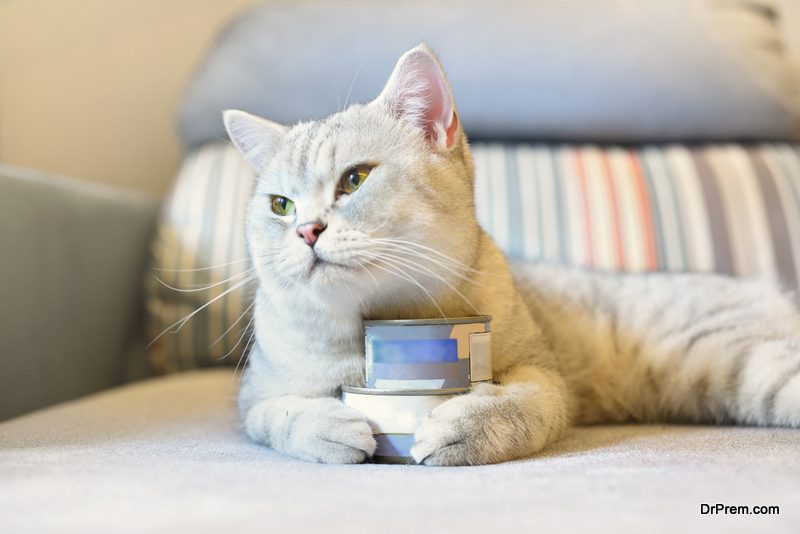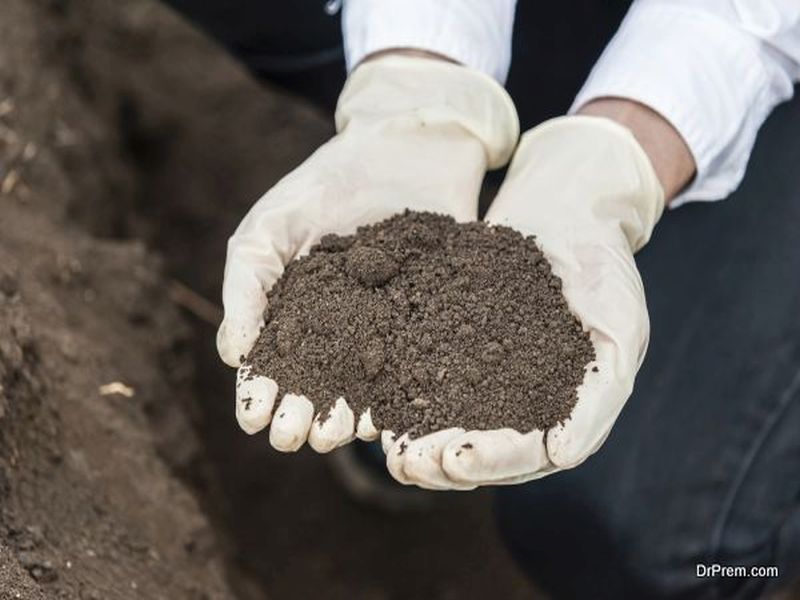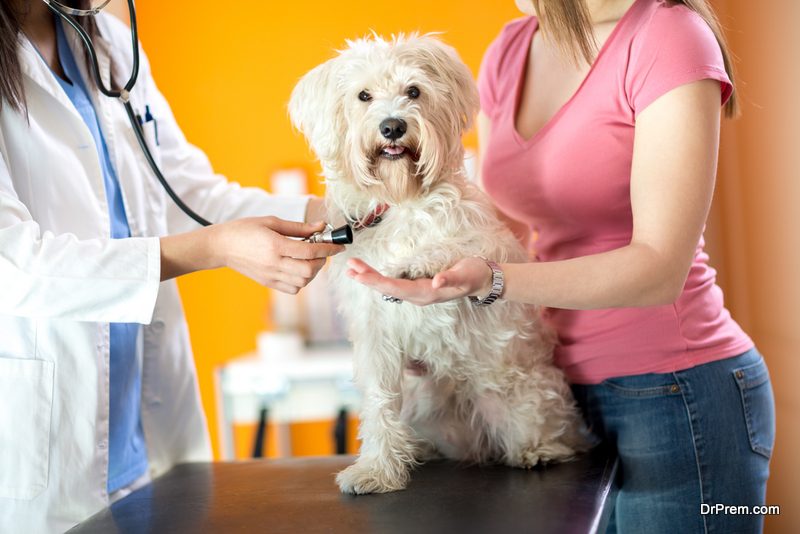If you decide to give your pet a green lifestyle, you’ll want to seek out ways to care for your pet and its needs in a more environmentally friendly manner. You don’t have to change everything at once. Instead, try one thing at a time. Then, after that one thing becomes comfortable and habitual, move on to the next thing. As long as you commit, before you know it, your pet will be living a green lifestyle.
1. Consider Cutting Out Canned Pet Foods
 If you choose to feed your pet canned food, you might want to reconsider or at least do some research. Studies have shown that pet food cans have a higher frequency of BPA and PVC-based coatings than the cans our food is packed in. Unfortunately, BPA and PVC chemicals can get into your pet’s food and cause health issues.
If you choose to feed your pet canned food, you might want to reconsider or at least do some research. Studies have shown that pet food cans have a higher frequency of BPA and PVC-based coatings than the cans our food is packed in. Unfortunately, BPA and PVC chemicals can get into your pet’s food and cause health issues.
Plus, wet pet food can contain pesticides and questionable meat sources.
2. Practice Green Waste Management
Owning a pet means that you’re going to have to manage its waste, and there’s a lot of waste to manage. While picking up your pet’s poop is socially and environmentally responsible, placing it in a plastic bag is not.
Think about it: Millions of tons of the stuff is carted to landfills each year where it sits and sits and sits in plastic bags. Consider using biodegradable pet waste bags instead. Also, if you use a litter box, try using a biodegradable litter instead of clay-based litter. Tons of non-biodegradable cat litter also makes its way to landfills.
3. Consider Composting
 Another way to do green waste management is to compost what your pets leave behind. Take care to create a totally separate composting setup for pet waste, however. You won’t be able to use this stuff on your garden due to the possibility of harmful pathogens.
Another way to do green waste management is to compost what your pets leave behind. Take care to create a totally separate composting setup for pet waste, however. You won’t be able to use this stuff on your garden due to the possibility of harmful pathogens.
Create a DIY composterfor your pet’s waste by burying a bucket or garbage can in an isolated part of your yard. Commercial-grade versions are also available. You can even buy and enzymatic formula, which will help break down the waste more efficiently.
3. Repurpose your old clothes
Eco-friendly beds made from recycled or sustainable materials have their own niche in the pet marketplace, but you may not want to spend the money on these type of products. If you don’t, you can repurpose some of your old clothing.
You can fill old pillowcases — or even a portion of a bedsheet —with softer clothing, such as ripped or stained t-shirts or old socks that have lost their mates, and then sew them shut to create comfy beds.
4. Stay Away from Pet Prescription Drugs
 Granted, there are some instances when your pet may need a prescription to help it heal, but if there’s a safe, natural alternative, why not opt for it instead?
Granted, there are some instances when your pet may need a prescription to help it heal, but if there’s a safe, natural alternative, why not opt for it instead?
For example, although there are prescription drugs your vet can prescribe for anxiety, Plantacea CBD oil is a natural remedy, free of THC, that you can use to help your pet relieve its feelings of anxiousness without the side effects of a prescribed drug.
Whenever possible, take the time to researchto find out if there’s a natural remedy that’s a good alternative to the prescription drug your vet recommends.
5. Spay and Neuter Your Pet
Unfortunately, the reason the shelters are often so full of unwanted animals is because people often don’t do the responsible thing and spay or neuter pets in their care. Unwanted pets overpopulate shelters and require constant care, food and other resources to survive.
If you’re worried about the cost, stop worrying. There are plenty of safe and caring petmedical providers that will perform low-cost or even no-cost spaying and neutering services, which will help solve the pet overpopulation problem and conserve resources. In some instances, having a pet insurance plan can also help alleviate the costs.
6. Consider DIY Toys
 If you’ve ever shopped for pet toys, you know they can be costly. The worst part is when you spend a lot of money only to end up with a destroyed or broken toy, not even one day after you give it to your pet.
If you’ve ever shopped for pet toys, you know they can be costly. The worst part is when you spend a lot of money only to end up with a destroyed or broken toy, not even one day after you give it to your pet.
Instead of spending money on junky pet toys made from questionable, and often non-eco-friendly materials, try making your own.
For example, you can take an old sock and put a tennis ball in the bottom for larger dogs. Or you can fill the sock with other socks and secure the top to make a soft chew toy.
7. Try Natural Flea and Tick Control
Although flea and tick control isoften a necessity at certain times of the year, that doesn’t mean you have to use chemical-laden preparations that could be irritating or harmful to your pet. Instead, try natural options.
Natural flea and tick options include shampoos and supplements, which can help keep those tiny pests at bay. You can also try misting your dog or cat with eco-friendly herbal repellents before they go outdoors.
Your yard can even be treated with natural options such as nematodes or diatomaceous earth.
Article Submitted By Community Writer




